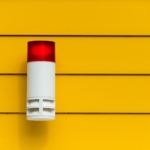Are you struggling to feel connected to yourself and the world around you? Curing depersonalization disorder can be a struggle without the right information and structure needed to heal. Thankfully, you will find both here in this blog post, so let’s get started.
Throughout this blog post, we will explore the causes and symptoms of depersonalization disorder, as well as the different ways of curing depersonalization disorder. From therapy techniques to self-help strategies and lifestyle changes, we’ll cover it all. You’ll discover practical tips and expert advice to regain control over your mind, body, and emotions.
Understanding and curing depersonalization disorder is a journey, but you don’t have to do it alone. With the information provided in this guide, you can take the first step towards reclaiming your sense of self and living a fulfilling life once again. Let’s embark on this transformative journey together.
Understanding Depersonalization Disorder
Depersonalization disorder is a dissociative disorder characterized by a persistent and distressing feeling of being detached from oneself. It often involves a sense of observing oneself from outside the body or feeling like an automaton. While occasional episodes of depersonalization can be relatively common and are not usually a cause for concern, depersonalization disorder is more severe and chronic in nature.
Depersonalization disorder can be a result of various factors, including trauma, stress, anxiety, depression, or substance abuse. It can also occur as a side effect of certain medications or medical conditions. The exact cause of depersonalization disorder is still not fully understood, but my personal research suggests that it may involve disruptions in the brain’s perception and processing of reality.
I am also a true believer that repeated trauma has the potential to be the main cause of DPDR due to overwhelm and consistent threat perception.
Causes and Risk Factors of Depersonalization Disorder
Depersonalization disorder can be triggered by a combination of genetic, childhood mirroring of authority figures, environmental, and psychological factors. While anyone can develop depersonalization disorder, certain risk factors may increase the likelihood of experiencing it. Individuals who have a history of trauma, such as physical or emotional abuse, are more susceptible to developing depersonalization disorder.
Additionally, those with a predisposition to anxiety or depression may be at a higher risk.
Other potential risk factors include chronic stress, substance abuse, and certain personality traits, such as a tendency to be self-critical or overly analytical. Understanding the underlying causes and risk factors can help in the diagnosis and treatment of depersonalization disorder.
DPDR and a dysregulated nervous system often go hand in hand.
DPDR Symptoms and Diagnosis
Disclaimer: We do not diagnose here, we inform you and help you to find personal solutions to curing depersonalization disorder.
Depersonalization disorder presents with a range of symptoms that can vary in intensity and duration. Common symptoms include feeling detached from one’s body, observing oneself from an external perspective, experiencing emotional numbness, and having a distorted sense of time. Individuals with depersonalization disorder may also describe feeling like a robot or living in a dreamlike state.
Diagnosing depersonalization disorder can be challenging, as the symptoms can overlap with other mental health conditions. A comprehensive evaluation by a mental health professional is crucial to determine the presence of depersonalization disorder. The diagnostic process may involve a detailed assessment of symptoms, medical history, and psychological evaluations.
The Impact of DPDR on Daily Life
Depersonalization disorder can have a profound impact on various aspects of an individual’s life. The persistent feelings of detachment and unreality can lead to difficulties in forming and maintaining relationships, both personal and professional. Social interactions may become challenging, as individuals with depersonalization disorder may struggle to connect with others on an emotional level.
The cognitive fog and emotional numbness associated with depersonalization disorder can also affect academic and work performance. Concentration and motivation may suffer, leading to decreased productivity and increased stress. Additionally, individuals with depersonalization disorder may experience heightened anxiety and depression as a result of their condition.
Treatment Options for Curing Depersonalization Disorder
The end goal for curing depersonalization disorder is prove safety to the subconscious mind and body. We can do this through a few different but powerful modalities such as imagery practice while being in an alpha brain wave state, breath work with a focus on activating the parasympathetic nervous system, and CBT practices to strengthen our rational thinking.
I’m a big believer in using the body in as much healing work as possible, since our traumas, negative feelings and repressed creativity all lie within the biggest part of our subconscious minds, our physical bodies. So please keep this in mind going forward.
Self-Help Strategies for Dealing with Depersonalization Disorder
A morning routine that promotes psychological and physiological safety is a great way to start your day. During my days of curing depersonalization disorder I usually had this rule:
1 habit for the mental body: Journalling and properly used affirmations.
1 habit for the spiritual body: Prayer and meditation practices around surrender.
1 habit for the physical body: Yoga or a brisk walk for example.
Avoid substances, such as alcohol and drugs, which can exacerbate symptoms, is crucial. Building a support network of understanding and empathetic individuals can provide valuable emotional support during difficult times.
Lifestyle Changes to Aid in Your Recovery
Making certain lifestyle changes can significantly contribute to the recovery process from depersonalization disorder. Engaging in activities that promote self-care and self-expression, such as creative hobbies, or pursuing personal interests, can foster a sense of identity and connection with oneself.
Creating a structured daily routine can help individuals with curing depersonalization disorder regain a sense of control and stability. Setting realistic goals and celebrating small achievements can boost self-esteem and motivation. It is important to be patient with oneself and accept that the recovery process may take time.
Remember, your depersonalization symptoms are messages letting you know that something is out of balance. Our job is to find out what is out of balance and re-balance it throughout our day. Every moment comes with an opportunity to provide safety to the lower self, the inner child.
Success Stories and Inspirational Accounts of Overcoming Depersonalization Disorder
Reading success stories and inspirational accounts (such as the anxiety success stories here) of individuals who have overcome depersonalization disorder can provide hope and motivation. These stories can offer insights into different coping strategies and treatment approaches that have worked for others.
They remind individuals that recovery is possible and that they are not alone in their journey.
It is important to approach success stories with an open mind and remember that everyone’s experience with depersonalization disorder is unique. What works for one person may not work for another. However, gaining knowledge and learning from the experiences of others can be empowering and inspiring.
Conclusion and Final Thoughts
Curing depersonalization disorder can be challenging, but with the right support and strategies, it is possible to restore a sense of self and regain control over one’s life. Understanding the causes, symptoms, and treatment options is crucial in navigating the journey towards recovery.
Whether through therapy, self-help strategies, or lifestyle changes, there are numerous tools available to help individuals with depersonalization disorder manage their symptoms and reclaim their sense of self. It is important to remember that healing takes time and patience, but with determination and support, a fulfilling and connected life is within reach.
If you or someone you know is struggling with depersonalization disorder, understand that curing depersonalization disorder is a possibility for everyone Remember, you are not alone, and there is hope for a brighter future. Let’s embark on this transformative journey together and restore your sense of self.




















I love that you refer to us as warriors! It can be so challenging. I have definitely tried to take some actions to cure my depersonalization disorder – meditating and visualization helps sometimes; I just picture myself on a beach with the waves crashing. It does take re-balancing throughout every day; not just a one and done kind of thing.
Your response is inspirational and important, thank you.